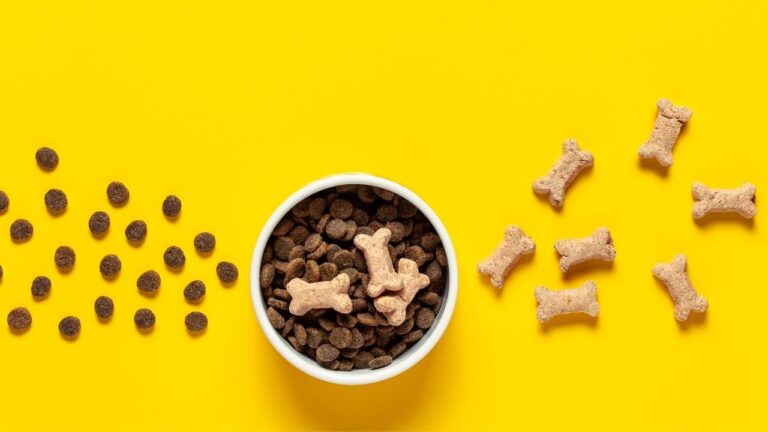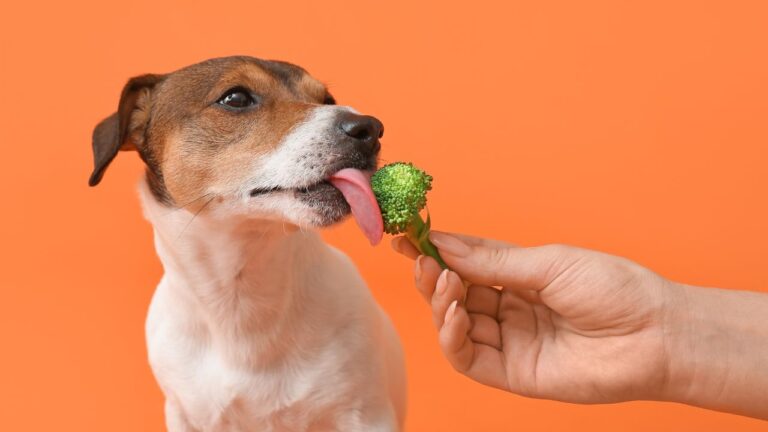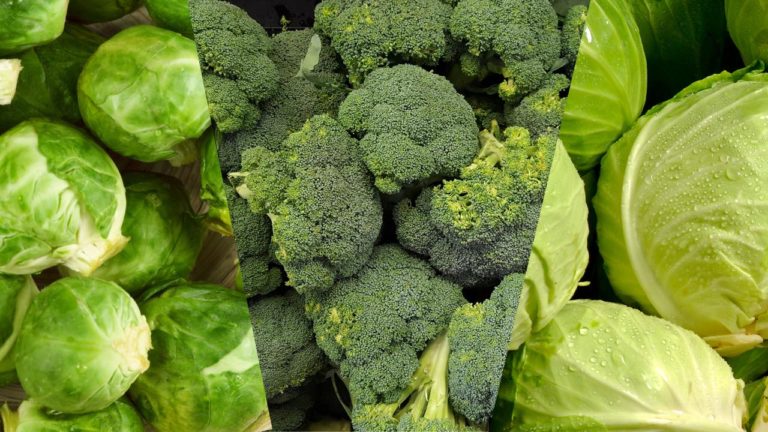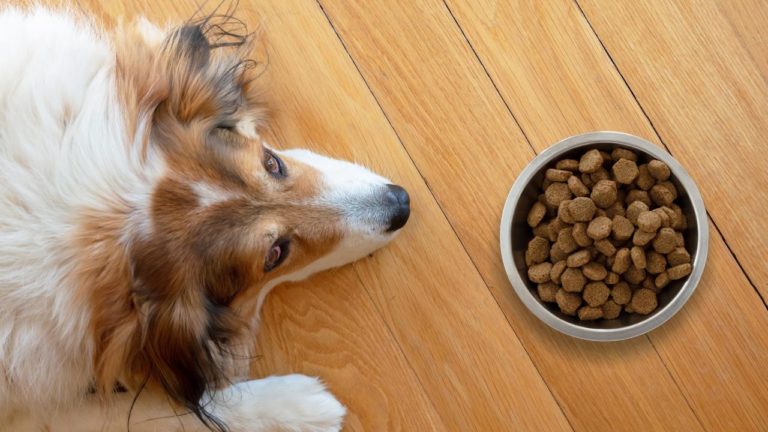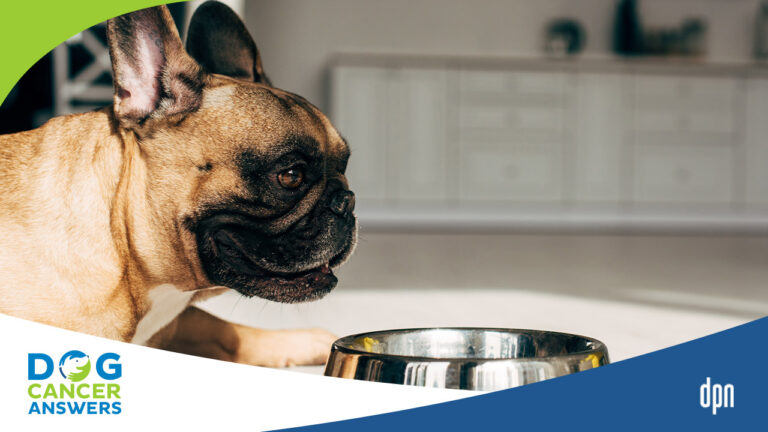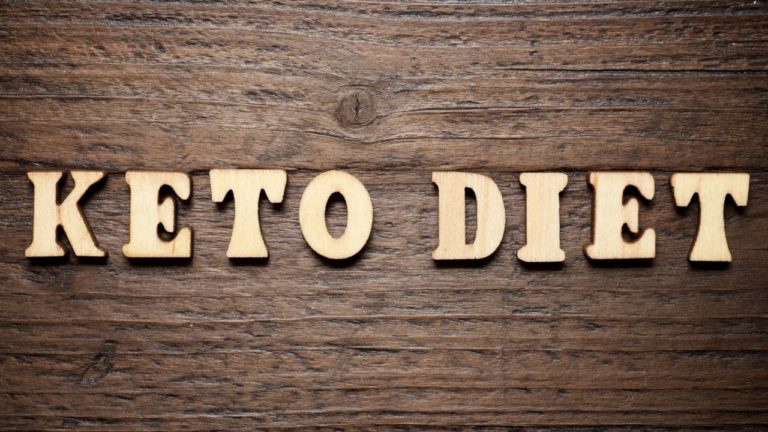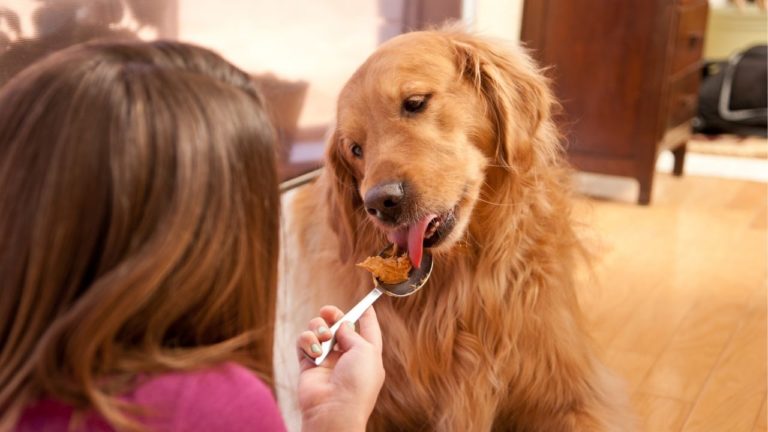How Much Homemade Food Should I Feed?
How much homemade food does a dog need? As usual, there isn't one "right answer" to this question -- but here's how to work your way toward the answer for your own dog.
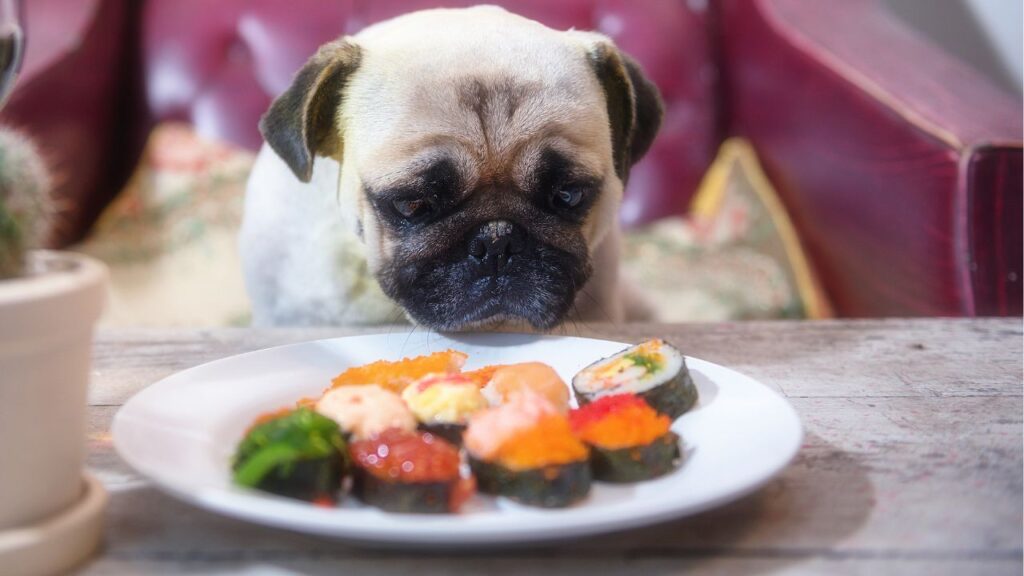
Read Time: 10 minutes
Your dog has cancer, and you’ve heard that a home-cooked diet is a good way to increase nutrition and cut out unnecessary carbs and problematic ingredients. You’re cooking up a recipe you got from your nutritionist, an online diet formulator, or Dr. Dressler’s dog cancer diet … and you realize you’re missing one critical piece of information: how much homemade food to give your dog at mealtimes.
How much of what’s in the pot should go in your dog’s bowl?
Unless you got this information from a veterinary nutritionist (a veterinarian who has extra special training in nutrition), you might not have an answer ready.
ARGH. Frustrating! Especially when your pup looks up at you with those big, pleading eyes, ready to dive into the pot.
Mildly Obsessed with Homemade Dog Food
In this article, I’m going to tell you everything I know about how to decide how much to feed your dog. I’ve learned this from Dr. Demian Dressler, author of The Dog Cancer Survival Guide, and other veterinarians and veterinary nutritionists I’ve encountered in my years working with readers and interviewing folks for our podcast DOG CANCER ANSWERS.
I’ve been cooking for dogs since 2005 and have had to navigate all the same things hundreds of thousands of readers of our site, books, and podcasts have had to over those decades.
I’m not a veterinarian, and you should not take what I write as medical advice. Instead, use it as food for thought and a way to calm down, discern, and discuss this with your veterinarian.
No Cups on the Back of the Bag
Commercial diets have serving recommendations on their labels, so you have some idea of how much your dog needs. Human labels have serving sizes, as well.
Of course, just because a food company is legally required to make a serving suggestion doesn’t mean it’s a good idea to follow it. The fruit company thinks an apple is a serving, and the candy company thinks a Snickers is a serving. Knowing which one I should eat and how much is good for me is up to me.
Just because a company is legally required to put a serving size on their label doesn’t mean it’s the right amount of food for your dog.
The same is true for our dogs and their foods. Whether feeding a commercial diet with recommendations on the back of the bag or a homemade diet, the amount to provide should be tailored to things other than commercial interests.
So … what are the guidelines? How much homemade food (or commercial food) should we be feeding our dogs?
Discernment Is the Key
Generally speaking, homemade food is denser in nutrition and has fewer fillers (empty carbs) than commercial options, so most dogs need less of it.
This is particularly true when you are following a diet formulated for dogs with cancer, which tends to focus on delicious proteins such as chicken, beef, venison, plus liver, good calcium sources like cottage cheese, cruciferous vegetables like broccoli, cauliflower, and cabbage, and complex low-glycemic carbohydrates like brown rice, oatmeal, and quinoa.
On the other hand, some dogs with cancer are losing weight rapidly (cachexia), or not able to eat. These dogs might need more food than you would expect to regain their weight.
But without the cups and ounces listed on a chart … how do you know how much to feed your dog? You must rely on your senses and cold hard data from your veterinarian.
Discernment is key, and your eyes and hands will help you every day when discerning how much to feed your dog.
Feeding with Your Eyes
I like to say we should feed with our eyes. (I didn’t make that up, and I can’t remember where I first heard it — but it stuck.)
This is true whether we are looking at ourselves or our dogs.
What do I mean?
- If you think your dog is a “cute chubby-wubby,” your dog is probably too heavy.
- And if you think your dog is “skin and bones,” your dog is probably too skinny.
You can tell a lot about how much your dog should weigh just by using your eyes.
(A heavy dog is probably manufacturing less of a cancer-protective hormone called adiponectin, which is why I’m starting with weight in this discussion.)
A Nice Layer of Fat Over the Rib Cage
You can also tell a lot by using your hands to feel your dog’s body physically.
A dog that is at a good weight is well-muscled with a nice layer of fat and healthy skin over the top. Dr. Demian Dressler once told me that if you place the palm of your hand on your dog’s side and gently rub back and forth over their ribs, you should feel pleasant little bumps under your palm.
- If you can feel sharp bumps, their ribs are too prominent, and they are probably underweight.
- If you can’t feel any bumps, there is probably too much fat on top of the ribcage, and they probably need to lose weight.
We’re looking for a Goldilocks effect … not too much and not too little fat. However, this isn’t a foolproof method because not all dogs have the same shape to their ribcages.
Or Over the Butt
Dr. Narda Robinson told me another good way to determine if your dog carries too much weight, which may be a little more accurate because it uses a part of the anatomy that is the same from dog to dog: the tailbone.
Put the palm of your hand over your dog’s tailbone, the little triangle-shaped bone at their butt that they love to get scratched. Give it a little gentle rub, and notice what you feel.
- If you feel a little bump of bone under the skin, that’s good.
- If you feel a lot of fat on top of the bone, that’s an overweight sign.
- If you feel a sharp little triangle of hard bone, that’s an underweight sign.
How do you know how it should feel? Put the palm of your hand over the knuckles of your other hand, and rub back and forth. Feel that little bump under skin as you palm your knuckles? That’s the right feeling on your dog’s rear end.
An Hourglass Waist
Generally, looking down at a dog from the top, you should see a “waist.”
You should also see it from the side.
- A dog with no waist at all — the line of their torso is flat from shoulder to tail — or worse, bulges out — is too heavy.
- A dog whose waist curves painfully is too skinny.
Now, different dogs may have different healthy shapes, so don’t get too hung up on your dog’s waist size … instead, ask your veterinarian about your specific dog’s weight. They will be the best judge of the best weight range for them and once your dog is there, you can see what their waist looks like!
Ask Your Veterinarian
Many veterinarians have told me over the years that raising a dog’s weight as a health concern is delicate. So delicate, that you may have never heard your vet say a word to you about this topic! That might be because your dog’s weight is healthy … or it could be because they don’t want to open up a hard conversation that could trigger defensiveness and guilt.
We all love our dogs (duh), and the last thing we want to hear is that the extra treats we give our dogs out of adoration and devotion are harming them.
But overweight dogs are at higher risk for all sorts of problems, not just cancer.
The correct weight range for your dog will depend upon many factors, including their breed, age, health conditions, and level of exercise. I suggest you ask your veterinarian the next time you bring your dog in the following question: “Is she/he at the right weight, do you think?”
Ask your veterinarian if your dog is at a healthy weight if they don’t bring the topic up.
Once you have a sense of whether you want to maintain, lose, or gain weight, you’ll be ready to start thinking about how much food to feed your dog.
How Much to Feed Your Dog
There is no one right amount of food to feed your dog, just like there is no one amount of food every human should get. There are many factors that influence how much food to give any creature!
Is Your Dog a Couch Potato or IronDog?
If you think about this in human terms, it will help. Extreme athletes — marathoners, Ironman competitors, gymnasts — may take as many as 12,000 calories daily to stay fueled. (And some have to consume more!)
But most of us expend much, much less energy and need only 2-2,500 calories. (Or less!)
Energy Expenditure Matters
I have a friend who placed in the top ten in the Ironman competition for two years. I lived with her for a summer and was shocked that every night, she ate a pint of ice cream after two or three burgers.
If you looked at her, you would never have imagined she could put so much food away.
She wasn’t more than 120 pounds, tops.
But she needed all that food to get ready to train the next day.
The same is true for dogs. I have noticed that when my dogs get injured or slow down, I have to feed them a little less while they recuperate to keep them from gaining weight.
Once we start our regular walks and play sessions, they usually need more food again.
Gender Matters
Females typically need fewer calories per day than men do (in general) because they have a higher percentage of body fat and a lower percentage of muscle. (Muscle burns more calories than fat — so a more muscular person typically needs more fuel.)
Many Variables
Fluctuations in hormones in both sexes, environmental factors (heat, cold, etc.), and many other variables also come into play.
Pregnant dogs need a lot more food, for example.
No authority can say, “Everyone should eat X amount of food, in Y weight” for humans, and there isn’t such a rule for dogs, either.
That’s why I like to say, “feed with your eyes.” Your observations can help guide you. If your dog is overweight, feed less food. If they are underweight, provide more food.
Your veterinarian should be able to give you a target weight range to aim for.
How to Get Started
This is all very good, but if you’re still staring at a big pot of homemade food and wondering how much to put in your dog’s bowl right now, let’s get started.
If you’re making a full recipe of Dr. Dressler’s diet, he recommends feeding a fifty-pound couch potato that amount of food over four days. If your dog is 50 pounds, you can just split the recipe in quarters and feed that much each day. If your dog is an athlete, that will last you two days … so split it in half, one for each day. (The base recipe freezes beautifully, as does most homemade recipes!) Over time feed more or less depending upon whether your dog’s weight goes up, down, or stays the same.
If your dog weighs 100 pounds, they need probably need about twice as much food as a fifty pound dog. So that recipe will last your girl one to two days. If your dog weighs 25 pounds, they probably need about half the amount of food a fifty-pound dog needs … so that recipe will last your boy four to eight days.
These are rough amounts, though, right? Start with those amounts and then feed more or less as you see how your dog’s weight responds.
There are other ways to calculate how much to feed. For example, Dr. Judy Morgan, a nutrition expert and one of our favorite podcast guests, recommends feeding a dog about 2-3% of their body weight when using homemade food, and I think that’s an excellent place to start.
How to Calculate 2-3% of Body Weight
The package your dog’s food comes in likely lists the serving size in cups, which measure volume rather than weight. But if we’re measuring by weight, we should use weight measurements, not volume.
First, let’s figure out how much your dog weighs in ounces so it’s easier to find how much food to feed later on.
A pound of weight is equal to 16 ounces. Therefore:
- A ten-pound dog weighs 160 ounces (10 x 16 = 160).
- A fifty-pound dog weighs 800 ounces (50 x 16 = 800)
- A 100-pound dog weighs 1600 ounces (100 x 16 = 1600)
Now let’s figure out what 2-3% of those weights in ounces are.
- A ten-pound dog needs 3.2 to 4.8 ounces of food per day (160 x .02 = 3.2 and 160 x .03 = 4.8)
- A fifty-pound dog needs 16 to 24 ounces of food per day (800 x .02 = 16 and 800 x .03 = 24)
- A 100-pound dog needs 32 to 48 ounces of food per day (1600 x .02 = 32 and 1600 x .03 = 48)
Notice you still have a range to work with, and that you should feed at the higher or lower ends of that range based on activity level.
- A couch potato ten-pound dog should probably start with 3.2 ounces daily.
- A ten-pound dog that’s super active should start with 4.8 ounces daily. Feed more or less, depending upon how their weight responds.
A small kitchen scale is an invaluable tool — I use mine multiple times a day!
How to Split Up Food Over Meals
When I was a kid, we only fed our dogs once a day so that we would have given them their entire food at once.
However, that seems to be less common now. I know that my little dogs get the “hunger barfs” if we don’t feed them several small meals a day spread out.
So if your dog needs one pound of food daily, and you typically feed multiple meals, make sure you split up that amount so that the TOTAL given in a day is one pound.
Remember, This Is a Range, Not A Rule
I can hear you now — some folks reading this are thinking, “You still have not given me an amount for my dog. I don’t want math; I want a measurement!!”
I get it. When your dog has cancer, you need as little complication as possible.
It’s just not possible, though. You’ll have to do some math to know how much to feed your dog.
Let’s say your dog is 50 pounds (because that is the average weight). You’ve done the math, and now you know your dog needs 16 ounces to 24 ounces of food daily. (That’s one pound to one and one-half pounds, by the way!)
This is a good starting point for your dog. But it’s just a starting point! If it’s not enough, and your dog loses weight, you should feed more (or check with your veterinarian if you think it’s associated with a health issue).
If your dog gains weight, you should give him less food.
You’ll have to keep eyeing and feeling your dog to see how much to give over time.
Should I Start High or Low?
How do you know whether to give one pound or one and one-half pounds to your fifty-pound dog? Activity levels.
- If your dog is a couch potato, start with one pound of food, and adjust up or down as needed.
- If your dog is an athlete, start at one and one-half pounds of food. Then adjust as needed over time.
Why Don’t We Use Cups?
I know. Grabbing a measuring cup is much easier than a kitchen scale. That’s precisely why dog food companies use them on their labels!
But they are controlling every single thing about their food. They know precisely how much is in a cup and a tiny piece of kibble. They can use volume measurements because they have processed that food into a consistent mash.
Homemade food isn’t highly processed and, therefore, not consistent. You are much better off weighing than using volume measurements.
Over time, you may learn how to measure your dog’s food by volume rather than having to weigh it. You’ll scoop some in the bowl and be able to see it’s the right amount. Weigh it just to be sure, though!
Don’t Forget to Enjoy
While feeding your dog, however much you provide, do not forget to enjoy their pleasure. And remember: just because they “seem hungry” or “want more” doesn’t mean they need it.
We have so many ways to love our dogs. Food is essential, but so are cuddles, exercises like walks, and meditation.
Closeness, happiness, and calm are what your dog treasures most. And those things can be given freely, without guilt or regret.
Molly Jacobson
Topics
Did You Find This Helpful? Share It with Your Pack!
Use the buttons to share what you learned on social media, download a PDF, print this out, or email it to your veterinarian.



